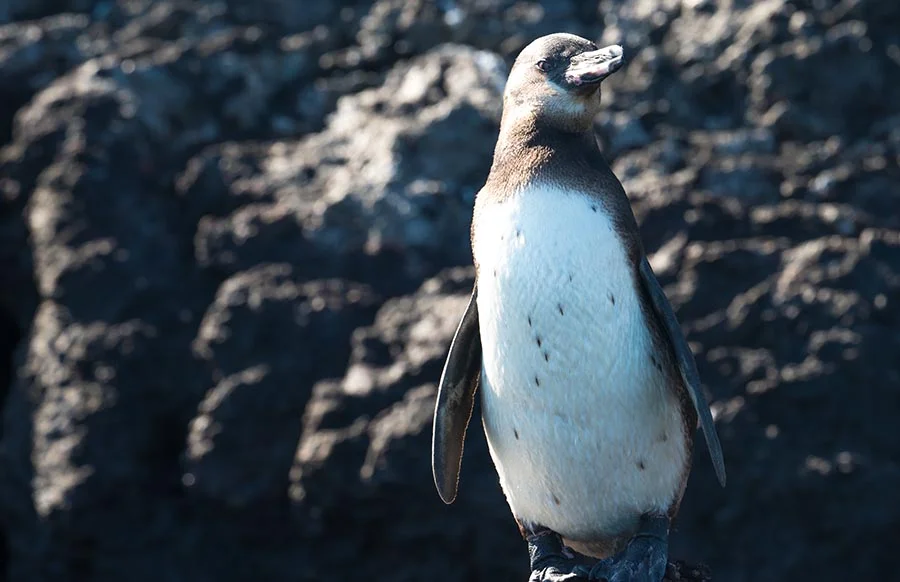
A study exposes the influence of microplastics on penguins in the Galapagos Islands | Travel News
Recently, researchers conducted an investigation into the accumulation of microplastics in the food web of the Galápagos Islands. The study, spearheaded by Karly McMullen from the University of British Columbia, specifically examined the severe impact of microplastic bioaccumulation on the islands' penguins.
Galápagos penguins, scientifically identified as Spheniscus mendiculus, emerged as the most adversely affected species. Consequently, the study aimed to assess the extent of microplastic-induced harm to marine organisms. The primary focus was on understanding the processes of bioaccumulation and potential biomagnification of microplastics within the Galápagos Islands' food web.
Toxic pollutants have the effect of magnifying trophic levels in the food web
Experts define biomagnification as a common ecological concept, illustrating how toxic pollutants progressively concentrate and intensify at each trophic level of the food web as predators consume prey.
While acknowledging the increasing presence of microplastics in the oceans, researchers emphasize that the full extent of the damage to marine organisms is still under evaluation. Notably, Galápagos penguins exhibit a significant accumulation of microplastics in their bodies, particularly in their digestive systems. This bioaccumulation occurs as the penguins consume prey, such as fish and other organisms containing microplastics, resulting in a rising concentration of these minute plastic particles in the penguins over time.
This accumulation poses potential adverse effects on the health of Galápagos penguins. The study reveals that, compared to other organisms in the food web, Galápagos penguins display the highest level of microplastics per biomass. This heightened concentration of microplastics in the bodies of these endangered penguins raises concerns about potential harm to their well-being, reproduction, and overall survival.
In response to these findings, the scientists aim to provide data to support risk management strategies for hazardous plastic waste, reduce ocean microplastic emissions, and inform marine policies geared towards the conservation of endangered species in the Galápagos Marine Reserve.
Monitoring the movement of microplastics
The researchers conducted simulations to track the movement of microplastics within the Galápagos penguin food web, utilizing data gathered from seawater, zooplankton, penguin prey, and penguin scat. Two models were developed—one specifically focusing on the Galápagos penguin and its diet, and another utilizing an existing model of the broader Bolivar Channel Ecosystem, of which the Galápagos Islands are a part.
The models revealed a rapid increase in microplastic accumulation and contamination across organisms until approximately the fifth year of the organism's life, followed by a gradual rise and eventual plateau. The study emphasized the significance of the excretion/elimination rate as a critical factor in future research on microplastics in food webs.
While recognizing the ongoing debate regarding whether microplastics genuinely accumulate in food webs, the scientists underscored the need for additional field research. Karly McMullen from the University of British Columbia highlighted the model predictions as exposing a key knowledge gap in microplastics science, specifically concerning the accumulation behavior and residence time of microplastics in the gut.
With microplastics becoming a prominent ocean pollutant, the researchers expressed growing concerns for marine fauna and coastal wildlife. McMullen emphasized the necessity for future research to address how diverse plastics behave after ingestion to understand their effects on wildlife and food webs.
Dr. Juan José Alava from the Institute for the Ocean and Fisheries at the University of British Columbia stated that the ultimate goal of this food web bioaccumulation modeling work is to provide science and data supporting the risk management of hazardous plastic waste, reduce microplastic emissions in oceans, particularly in marine UNESCO Heritage sites like the Galapagos Islands, and inform local and international marine policies to conserve endangered, endemic seabird species in the Galapagos Marine Reserve.

